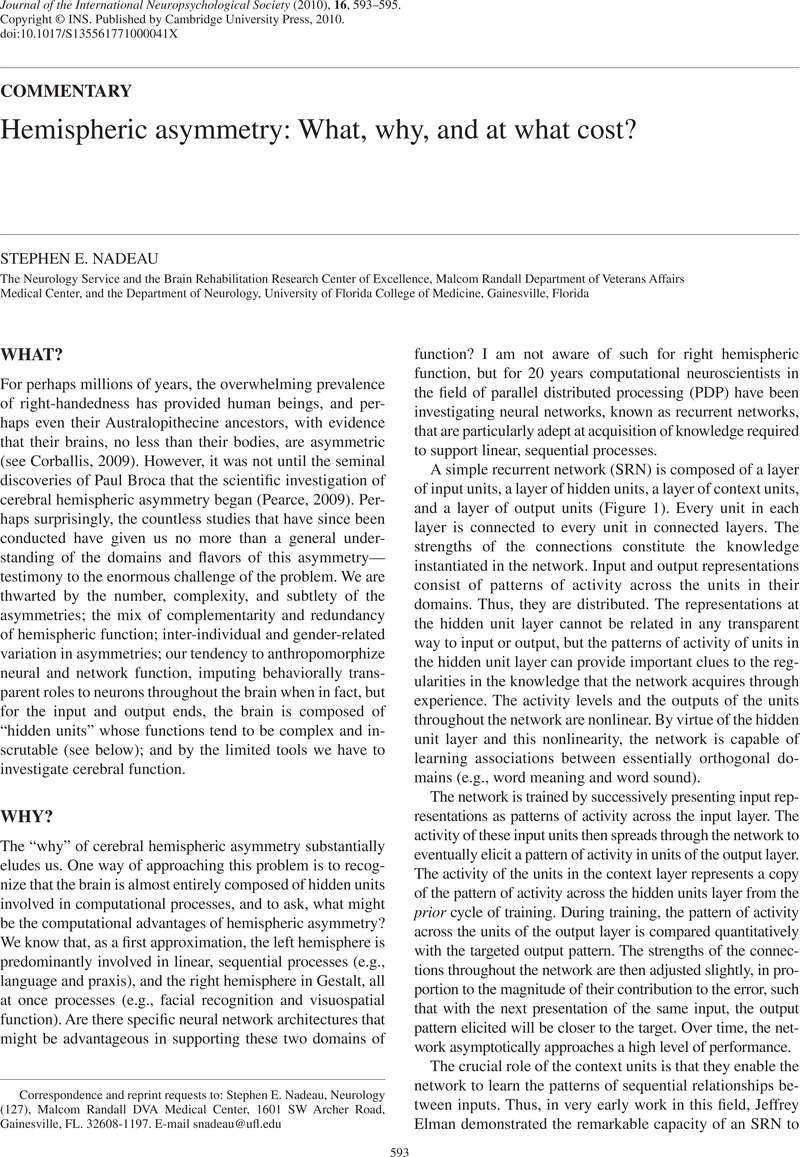Crossref Citations
This article has been cited by the following publications. This list is generated based on data provided by Crossref.
Kim, Jong Hun
Lee, Jong Weon
Kim, Geon Ha
Roh, Jee Hoon
Kim, Min-Jeong
Seo, Sang Won
Kim, Sung Tae
Jeon, Seun
Lee, Jong-Min
Heilman, Kenneth M.
and
Na, Duk L.
2012.
Cortical asymmetries in normal, mild cognitive impairment, and Alzheimer's disease.
Neurobiology of Aging,
Vol. 33,
Issue. 9,
p.
1959.
Gasquoine, Philip Gerard
2016.
Blissfully unaware: Anosognosia and anosodiaphoria after acquired brain injury.
Neuropsychological Rehabilitation,
Vol. 26,
Issue. 2,
p.
261.
Badzakova-Trajkov, G.
Corballis, M.C.
and
Häberling, I.S.
2016.
Complementarity or independence of hemispheric specializations? A brief review.
Neuropsychologia,
Vol. 93,
Issue. ,
p.
386.
Nadeau, Stephen E.
2020.
Neural Population Dynamics and Cognitive Function.
Frontiers in Human Neuroscience,
Vol. 14,
Issue. ,
Nadeau, Stephen E.
2021.
Disorders of Emotion in Neurologic Disease.
Vol. 183,
Issue. ,
p.
299.
Digesu, Giuseppe
Riemma, Gaetano
Torella, Marco
La Verde, Marco
Schiattarella, Antonio
Munno, Gaetano
Fasulo, Diego
Celardo, Angela
Vagnetti, Primo
Annona, Salvatore
Schettino, Maria
Guida, Maurizio
and
De Franciscis, Pasquale
2022.
Functional Brain Asymmetry and Menopausal Treatments: Is There a Link?.
Medicina,
Vol. 58,
Issue. 5,
p.
616.





